




Your support is critical to our success.
Handb. Cacteenk. (ed. 2 - Rümpler) ed. 2, 794. 1886
Family: CACTACEAE
Accepted Scientific Name: Echinocereus coccineus subs. paucispinus (Engelm.) W.Blum, Mich.Lange & Rutow in W.Blum et al.
Echinocereus Monogr. (preprint) [4] (1998) W.Blum, Mich.Lange et al.

SB406 Kimble Co, Texas, USA
Origin and Habitat: Southwestern USA (Arizona, Colorado, New Mexico, western Texas), Mexico (Sonora, Coahuila, Chihuahua)
Habitat: It is found growing on rocky outcroppings, often in the partial-shade of oak and pine-oak woodlands and mixed conifer forest.
Synonyms:
- Echinocereus coccineus subs. paucispinus (Engelm.) W.Blum, Mich.Lange & Rutow in W.Blum et al.
- Cereus paucispinus Engelm.
- Echinocereus coccineus var. paucispinus (Engelm.) D.J.Ferguson
- Echinocereus paucispinus (Engelm.) Rümpler
- Echinocereus triglochidiatus var. paucispinus (Engelm.) W.T.Marshall & T.M.Bock
Echinocereus coccineus Engelm. in Wisliz.
Mem. Tour N. Mexico [Wislizenus] 93, adnot. 1848 [Apr 1848]
Synonymy: 46
- Echinocereus coccineus Engelm. in Wisliz.
- Cereus coccineus (Engelm.) Engelm.
- Echinocereus triglochidiatus var. coccineus (Engelm.) W.T.Marshall & T.M.Bock
- Echinocereus arizonicus subs. matudae (Bravo) Rutow
- Echinocereus matudae Bravo
- Echinocereus arizonicus subs. nigrihorridispinus W.Blum & Rutow in W.Blum et al.
- Echinocereus canyonensis Clover & Jotter
- Echinocereus coccineus subs. aggregatus (Engelm. ex S.Watson) W.Blum, Mich.Lange & Rutow
- Cereus aggregatus (Engelm. ex Emory) J.M.Coult.
- Coryphantha aggregata (Engelm. ex Emory) Britton & Rose
- Coryphantha neovivipara var. aggregata (Engelm. ex Emory) Y.Itô
- Coryphantha vivipara var. aggregata (Engelm. ex Emory) W.T.Marshall
- Echinocereus aggregatus (Engelm. ex Emory) Rydb.
- Escobaria aggregata (Engelm. ex Emory) Buxb.
- Mammillaria aggregata Engelm. in Emory
- Mammillaria vivipara var. aggregata (Engelm. ex Emory) L.D.Benson
- Echinocereus coccineus var. arizonicus (Rose ex Orcutt) D.J.Ferguson
- Echinocereus arizonicus Rose in Orcutt ex Orcutt
- Echinocereus triglochidiatus var. arizonicus (Rose ex Orcutt) L.D.Benson in L.D.Benson
- Echinocereus coccineus var. gurneyi (L.D.Benson) S.Brack & K.D.Heil
- Echinocereus triglochidiatus var. gurneyi L.D.Benson
- Echinocereus coccineus var. kunzei (Gürke) Backeb.
- Echinocereus kunzei Gürke
- Echinocereus coccineus var. rosei (Wooton & Standl.) A.D.Zimmerman
- Echinocereus rosei Wooton & Standl.
- Echinocereus triglochidiatus var. rosei (Wooton & Standl.) W.T.Marshall
- Echinocereus decumbens Clover & Jotter
- Echinocereus engelmannii subs. decumbens (Clover & Jotter) W.Blum & Mich.Lange in W.Blum et al.
- Echinocereus engelmannii var. decumbens (Clover & Jotter) L.D.Benson
- Echinocereus hexaedrus (Engelm.) Rümpler
- Cereus hexaedrus Engelm. & J.M.Bigelow
- Echinocereus paucispinus var. hexaedrus (Engelm. & J.M.Bigelow) K.Schum.
- Echinocereus triglochidiatus var. hexaedrus (Engelm.) Boissev. in Boissev. & C.Davidson
- Echinocereus krausei De Smet. in Förster
- Echinocereus neomexicanus Standl.
- Cereus neomexicanus (Standl.) Tidestr. in Tidestr. & Kittell
- Echinocereus triglochidiatus var. neomexicanus (Standl.) W.T.Marshall
- Echinocereus phoeniceus (Engelm.) Rümpler
- Cereus phoeniceus Engelm.
- Echinocereus phoeniceus var. albispinus Rümpler in Förster
- Echinocereus phoeniceus var. longispinus Rümpler in Förster
- Echinocereus phoeniceus var. rufispinus Rümpler in Förster
- Echinocereus roemeri Engelm. ex F.Haage
- Cereus roemeri Engelm.
- Echinocereus toroweapensis (P.C.Fisch.) H.Fürsch
Echinocereus coccineus subs. paucispinus (Engelm.) W.Blum, Mich.Lange & Rutow in W.Blum et al.
Echinocereus Monogr. (preprint) [4] (1998)
Synonymy: 5
- Echinocereus coccineus subs. paucispinus (Engelm.) W.Blum, Mich.Lange & Rutow in W.Blum et al.
- Cereus paucispinus Engelm.
- Echinocereus coccineus var. paucispinus (Engelm.) D.J.Ferguson
- Echinocereus paucispinus (Engelm.) Rümpler
- Echinocereus triglochidiatus var. paucispinus (Engelm.) W.T.Marshall & T.M.Bock
Description: Usually clumping, Echinocereus coccineus subs. paucispinusSN|8493]]SN|8493]] (Echinocereus paucispinusSN|8497]]SN|8497]]) often forms large colonies of many as 50 thick, stems on each plant at maturity.
Stems: Semi-erect, pale green, up to 40 cm tall, 6 cm in diameter.
Ribs: 5 to 8 warty with narrow furrows.
Areoles: Whitish, 1-2 cm apart.
Central spine: 0 or 1 dark, up to 3.5 cm long;
Radial spines: 3 to 6 straight or not, 1.5-2 cm long yellowish and turning grey after some years.
Flowers: Funnel shaped, hummingbird-attracting, scarlet with a clear throat, length and width averaged 60 mm and 30 mm, respectively, the petal tips are rounded, stigma with 7 or 8 lobes. Peak flowering comes from late April to June on mature clumps.
Remarks: Female and male flowers: Echinocereus coccineus subs. paucispinusSN|8493]]SN|8493]] is a cactus with both hermaphroditic (bisexual) and dioecious (male and female) forms of flowers in different plant. Male flower shows pollen-filled anthers surrounding the base of the stigma lobes. While functional female flower from different plants show reduced filaments and empty anther sacs held below the stigma lobes. The flowers appear specialized to hummingbirds but are also pollinated by bees they are huge and highly rewarding, and daily nectar production averaged 30 mg sugar/flower. This set of traits represents a syndrome rare among hummingbird flowers in which the flower fits the head rather than just the bill, and birds are well rewarded for a risky or inconvenient visit.
Subspecies, varieties, forms and cultivars of plants belonging to the Echinocereus coccineus group
 Echinocereus arizonicus subs. matudae (Bravo) Rutow: has larger stem, up to 50 cm tall, and 12 cm in diameter, a reduced number of ribs with fewer short, thick spines. Distribution: Mexico, Chihuahua.
Echinocereus arizonicus subs. matudae (Bravo) Rutow: has larger stem, up to 50 cm tall, and 12 cm in diameter, a reduced number of ribs with fewer short, thick spines. Distribution: Mexico, Chihuahua. Echinocereus coccineus Engelm. in Wisliz.: It has stems that are 2,5 to 5 cm thick, with 8 to 11 ribs. The spines are not differentiable between centrals & radials. There are 0 to 4 central spines and 5 to 20 radial spines per areole. The red-orange flower is 7-8 cm across, and the stigma has 7 or 8 lobes.
Echinocereus coccineus Engelm. in Wisliz.: It has stems that are 2,5 to 5 cm thick, with 8 to 11 ribs. The spines are not differentiable between centrals & radials. There are 0 to 4 central spines and 5 to 20 radial spines per areole. The red-orange flower is 7-8 cm across, and the stigma has 7 or 8 lobes.- Echinocereus coccineus var. arizonicus (Rose ex Orcutt) D.J.Ferguson
 Echinocereus coccineus var. gurneyi (L.D.Benson) S.Brack & K.D.Heil: Stems darker green in color compared to the other varieties, and 10 cm thick. The flowers are Orangish-red. This variety is often included into the 'coccineus' subspecies. It looks like coccineus, but is very clustering!
Echinocereus coccineus var. gurneyi (L.D.Benson) S.Brack & K.D.Heil: Stems darker green in color compared to the other varieties, and 10 cm thick. The flowers are Orangish-red. This variety is often included into the 'coccineus' subspecies. It looks like coccineus, but is very clustering! Echinocereus coccineus subs. paucispinus (Engelm.) W.Blum, Mich.Lange & Rutow in W.Blum et al.: It has stems that are about 6 cm thick, with 5 to 8 acute narrowly furrowed ribs that have areoles that are spa ced 0,5 to 1 cm apart. It has 0 or 1 central spine, 1.4 inches long, and 3 to 6 radial spines that are curved and straight. The flower is red with a hint of orange & shaped like a funnel about 5 cm long, having 7 lobes of the stigma.
Echinocereus coccineus subs. paucispinus (Engelm.) W.Blum, Mich.Lange & Rutow in W.Blum et al.: It has stems that are about 6 cm thick, with 5 to 8 acute narrowly furrowed ribs that have areoles that are spa ced 0,5 to 1 cm apart. It has 0 or 1 central spine, 1.4 inches long, and 3 to 6 radial spines that are curved and straight. The flower is red with a hint of orange & shaped like a funnel about 5 cm long, having 7 lobes of the stigma. Echinocereus coccineus var. rosei (Wooton & Standl.) A.D.Zimmerman: This plant has relatively long, white wool in the areoles of the ovary and fruit. Flowers scarlet (pink and orange flowered plants are also reported)
Echinocereus coccineus var. rosei (Wooton & Standl.) A.D.Zimmerman: This plant has relatively long, white wool in the areoles of the ovary and fruit. Flowers scarlet (pink and orange flowered plants are also reported) Echinocereus roemeri Engelm. ex F.Haage
Echinocereus roemeri Engelm. ex F.Haage
Notes: Echinocereus coccineusSN|10576]]SN|7140]] v. paucispinus is a tetraploid form that was formerly considered (for its superficial resemblance) a synonym of Echinocereus triglochidiatusSN|7140]]SN|10576]], but may be distinguished by its relatively terete and more consistently straight spines and now is considered a distinct species.
Bibliography: Major references and further lectures
1) David Hunt, Nigel Taylor “The New Cactus Lexicon” DH Books, 2006
2) Edward F. Anderson “The Cactus Family” Timber Press, 2001
3) Terry, M., Heil, K., Gómez-Hinostrosa, C. & Corral-Díaz, R. 2013. Echinocereus coccineus. The IUCN Red List of Threatened Species. Version 2014.3. <www.iucnredlist.org>. Downloaded on 29 April 2015.
4) Stuart Max Walters “The European Garden Flora: Dicotyledons (Part I)” Cambridge University Press, 1989
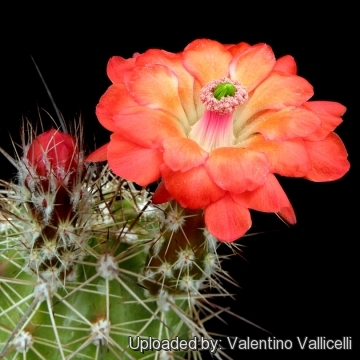
Echinocereus paucispinus (Echinocereus coccineus subs. paucispinus) Photo by: Valentino Vallicelli
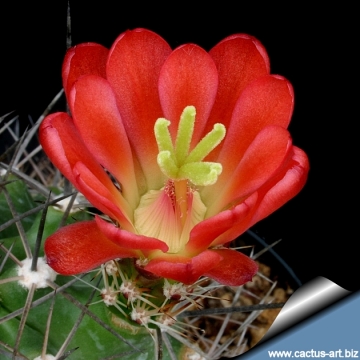
Echinocereus paucispinus (Echinocereus coccineus subs. paucispinus) Photo by: Cactus Art
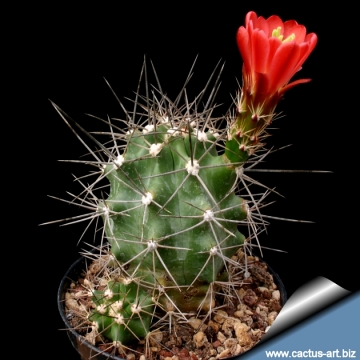
Echinocereus paucispinus (Echinocereus coccineus subs. paucispinus) Photo by: Cactus Art

Echinocereus paucispinus (Echinocereus coccineus subs. paucispinus) Photo by: Cactus Art
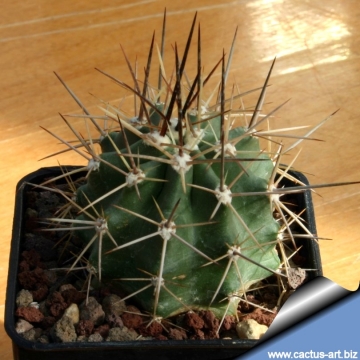
Echinocereus paucispinus (Echinocereus coccineus subs. paucispinus) Photo by: Cactus Art
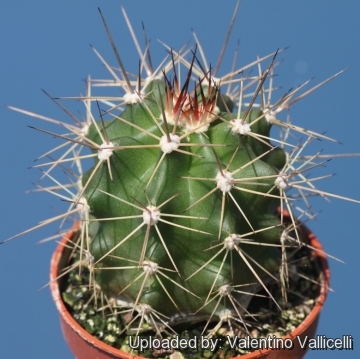
Echinocereus paucispinus (Echinocereus coccineus subs. paucispinus) Photo by: Valentino Vallicelli
Cultivation and Propagation: Echinocereus coccineusSN|10576]]SN|7140]] subsp. paucispinus is fairly easy to grow. It makes great potted specimens.
Soil: Use a mineral well permeable soil with little organic matter (peat, humus). It grows in limestone areas of Texas (Big Bend area) and adjacent areas of Mexico, so will probably benefit from extra calcium in its soil.
Growth rate: It grows well, though slowly, but it possible to increase the speed of growth to some extent by providing adequate amount of water, warmth, and a liquid fertilizer diluted half strength during the active growing season, but it’s susceptible to rotting if too wet. Most plants will offset readily, and clumps can be produced in a few years.
Soil: It needs a very porous, slightly acidic potting medium (add pumice, vulcanite, and perlite). Outdoors it does well on poor, rocky soils.
Exposure: It likes a sunny position also blasting sun in summer. If grown indoor provide 4 to 6 hours, or more, direct morning or afternoon sun.
Watering: It is sensitive to overwatering (rot prone) needs a very good drainage to avoid rotting, but requires more moisture than true desert cacti to grow and produce flowers.
Hardiness: It its natural environment it is very cold resistant from -10° to -25° C (depending on clones) or less for short periods of time. It can be grown outdoors in Mediterranean warm-temperate climates, But for safe cultivations needs anyway to kept above 5 °C and dry in winter. But it can tolerate temperatures down to -5° C (or even less) for very short periods if very dry and ventilated. During winter month, put them in a cool luminous place and encourage them to enter winter dormancy by withholding water and fertiliser over the winter as they will etiolate, or become thin, due to lower levels of light.
Maintenance: Repot every two years. Needs lots and lots of space to grow, use large shallow container or bowl filled with very porous compost. It like pots with generous drain holes.
Pest & diseases: They are susceptible to fungal diseases if overwatered, but are not nearly as sensitive as many other cacti, especially in warm weather. If kept damp through cold periods, they will invariably suffer.
Garden uses: It is a fine plant for a rock garden or container, contrasts well with agaves, yuccas, and low-growing flowering plants.
Grafting stock: The taller fast-growing forms of Echinocereus coccineusSN|7140]]SN|7140]] and of Echinocereus triglochidiatusSN|7140]]SN|10576]] are highly recommended stocks for grafting cold hardy type cactus species. These can be used as cold hardy type stocks for almost all types of cactus, while still retaining the original natural grown look to the scion.
Edible uses: The fruit can be consumed fresh or preserved.
Propagation: Cutting as it branches freely from the base; Also can be grown from seeds. The seeds may be germinated and grown in containers. Their main requirements consist of high humidity levels, free-draining soil mix, and enough water, light, and nutrition.
| Your Actions | |
|---|---|
| Back to Echinocereus index | |
| Back to Cactaceae index | |
 |
Back to Cacti Encyclopedia index |
Privacy stantement - Terms and conditions - How to cite - About us - Feedback - Donate



